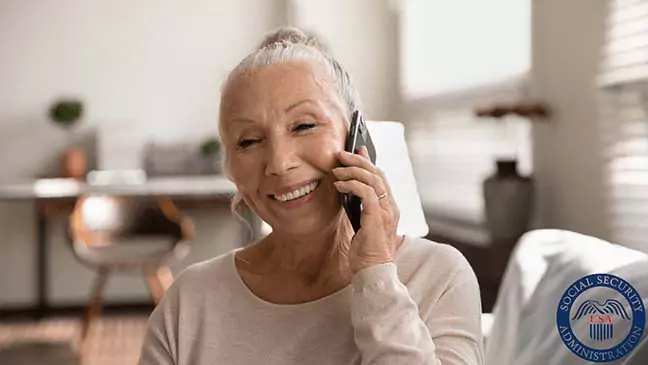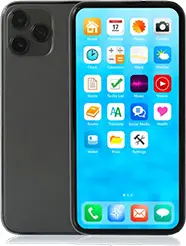If you are looking for a comprehensive guide to applying for government assistance programs, this is the article for you. This post will teach you all about the different types of government programs and how to apply for them. We’ll even provide a few examples of what some people have been able to get from these programs! There’s no reason for anyone who needs or is qualified for these programs to be left out.
What is the Food Stamp Program?
The food stamp program, also known as the Supplemental Nutrition Assistance Program (SNAP), is a government program that helps people who are experiencing food insecurity or poverty afford food. This includes anyone who is unemployed/underemployed with only limited resources available for food.
A person’s household income must be below 130% of the poverty level to be eligible for food stamps. Work requirements (20 hours/week) must be met if there are no minor children in the home. The maximum monthly benefit is $194 per person or $649 for a family of four. The food stamps received could be higher, depending on the state you reside in.
Applying for food stamps is simple and can be done online. To apply you’ll need to provide your name, address, email, phone number, your monthly income before taxes, monthly expenses, and household members’ information (including Social Security numbers). After approval, the benefits will be paid through an EBT card. EBT cards are just like debit cards. You can use EBT cards to buy groceries at participating stores. However, food stamp benefits cannot be redeemed for hot foods or prepared meals (like those found at a restaurant).
You must apply for SNAP benefits through your state’s office. Click the link to find your state office: https://www.fns.usda.gov/snap/state-directory

SSI Benefits: What You Get and Who Qualifies
The Supplemental Security Income (SSI) Program is a federal income supplement that helps meet the basic needs of blind, disabled, and aged people who have little or no other resources to get by. The Social Security Administration (SSA) provides monthly payments to individuals with limited income and resources.
People get SSI benefits by meeting certain work or medical requirements. You can get more information on the SSA website to see if you qualify for these monthly payments.
The benefits you get from SSI vary depending on your situation but typically include a monthly payment. These payments can help pay for food, clothing, and housing. You may get some money to buy things you need for work or daily life.
To get SSI benefits, you must be considered disabled by the SSA (Social Security Administration). A disability is usually defined as having a physical or mental condition that makes it difficult to do basic work activities.
When you are looking into these monthly payments, make sure to get all of the necessary documents together to ensure you get what you qualify for as quickly as possible!
You can get more information about SSI benefits on the SSA website with a simple online search or by visiting your local Social Security office for further guidance.
How can WIC help my family?
Another government program, WIC, helps many families throughout America and can help your family too. WIC stands for Women, Infants & Children and provides food to low-income families meeting the income eligibility requirements, a percentage below the federal poverty level. Once your child is born he/she may be covered under the WIC program from infancy up to the age of five.
Qualifying criteria for WIC food benefits
- Pregnant (during pregnancy and up to 6 weeks after the birth of an infant or the end of the pregnancy)
- Postpartum (up to six months after the birth of the infant or the end of the pregnancy)
- Breastfeeding (up to the infant’s first birthday)
- Infants (up to the infant’s first birthday),
- Children (up to the child’s fifth birthday
Residential (Applicants must live in the state in which they apply)
Income (must be below 185 percent of the federal poverty guidelines). Please check the chart here.
Nutrition Risk (means that an individual has medical-based or dietary-based conditions)
WIC food benefits are given in the form of checks or a card that can be used to purchase food items such as fruits, vegetables, cereal, milk, cheese, and more at participating grocery stores.
Sign up for WIC benefits through your state.
Can I get help with Housing?
Yes, you can, another government program that helps low-income families is housing. The purpose of this program is to help people afford safe and sanitary housing by paying their rent or sometimes just a portion of it (depending on the situation).
There are two types of housing assistance: Public Housing and Section 8 Housing. Both programs pay all or part of the tenant’s rent for them, but there is a key difference between the two. The public housing program allows people to live in government-owned or managed properties, whereas the subsidized rental assistance program allows people to live in privately owned properties only.
The requirements for housing vary depending on your age, living situation, and income level but you must meet all requirements to be accepted into a housing program.
Sign up for Pubic and Section 8 Housing at: https://www.hud.gov/program_offices/public_indian_housing/pha/contacts

Medicaid and How it Works
Medicaid is a government program that provides health coverage to more than 74 million people in the United States. Medicaid is administered by states, according to federal guidelines.
Medicaid is the primary source of medical coverage for low-income people in the United States and is administered by the states to serve vulnerable populations such as children, pregnant women, and elderly adults. Medicaid provides funding for both acute and long-term care; Medicaid also supports Medicare beneficiaries with services like home health care and nursing home care. Medicaid is different from Medicare and CHIP (Children’s Health Insurance Program). Medicaid is funded by federal and state taxes, and states have a certain flexibility in determining who is eligible for Medicaid coverage. Medicaid eligibility rules vary by state; however, the government uses a formula to determine eligibility for most applicants within certain groups.
There are several groups. You can qualify for Medicaid if you are a low-income parent, a pregnant woman, a child, an elderly person, or a person with disabilities. In most states, parents with income up to 138% of the Federal Poverty Level (FPL) are eligible for Medicaid coverage.
Medicaid also covers most pregnant women with incomes up to 194% of the FPL and children with incomes up to 138% of the FPL. Medicaid eligibility for pregnant women, infants, and children only extends for specified periods of time in some states. Medicaid also covers elderly people who meet certain eligibility requirements or persons with disabilities who have received Social Security Disability.
For more information about Medicaid, please visit: https://www.medicaid.gov/medicaid/eligibility/index.html
What is the Veterans and Survivors Pension Benefit?
The Veterans and Survivors Pension Benefit (VSPB) is a government program that was created to benefit the spouses and dependents of disabled veterans or service members who died while on active duty. The VSPB provides monthly benefits to eligible survivors, including 1) an income-based pension for surviving spouses and minor children, 2) compensation for non-service-connected disabilities, and 3) medical care benefits.
To be eligible for VSPB, you must be the spouse or dependent of a veteran who served at least 90 days of active military service, one day of which was during a wartime period. In addition, the veteran must not have been discharged from active duty under dishonorable conditions.
The VSPB program is administered by the Department of Veterans Affairs (VA). For more information about eligibility and benefits, please visit the VA website:
National School Lunch Program (NSLP)
The National School Lunch Government Program (NSLP) supports low-income children in public and nonprofit private schools by providing nutritious meals to them when they are at school.
The NSLP is administered by the US Department of Agriculture (USDA), which determines meal requirements and prices. The program is open to all students in participating schools, regardless of income.
Schools that participate in the NSLP receive cash subsidies and donated commodities from the USDA to prepare and serve lunches. NSLP, a federally assisted meal program, provides nutritionally balanced, low-cost, or free lunches to children each school day. Schools can also use the subsidy to purchase food items from authorized vendors.
The NSLP is important because it 1) provides essential nutrients to students, 2) allows students to get involved in activities that they love while learning new skills, 3) helps schools excel in education, 4) supports the health and well-being of children, and 5) helps reduce food insecurity.
For more information about the National School Lunch Program, please visit:
https://www.fns.usda.gov/cn/applying-free-and-reduced-price-school-meals

Is There Help with Phone Bills and Broadband Costs?
Yes, there is help with phone bills. Lifeline and Affordable Connectivity Program (ACP) resources are for anyone eligible for free or reduced cell phone and internet service. While the Lifeline Program provides free cell phone service for individuals and families who meet certain guidelines, the Emergency Broadband Benefit provides free or reduced internet service for those same households.
How to Qualify for Lifeline and ACP
Consumers are eligible for the Lifeline program if they participate in the qualifying programs, listed below, or if they have a gross household income at or below 135% of the Federal Poverty Guidelines.
- Supplemental Nutrition Assistance Program (SNAP)
- Medicaid
- Supplemental Security Income (SSI)
- Federal Public Housing Assistance (FPHA)
- Veterans and Survivors Pension Benefit
- Tribally-Administered Temporary Assistance to Needy Families (TANF)
- Tribal Head Start
- Food Distribution Program on Indian Reservations (FDPIR)
You can apply to see if you qualify for Lifeline or ACP through the federal National Verifier website at checklifeline.org. You will then need to take your approval letter to a Lifeline or ACP service provider.
However, there is an easier way to check if you qualify for Lifeline and ACP benefits. Just apply directly with a Lifeline service provider’s convenient one-stop for enrollment such as EASY Wireless.
How to Apply for Lifeline and ACP with EASY Wireless
Enroll Online for Lifeline and ACP
To apply online, fill out your email and zip code in the box below and click the orange “Enroll Now” button to check whether you qualify with EASY Wireless. Video chat is now available to help you complete your application.
For Personalized Service with an In-Store Customer Service Agent
Come to any one of our 30+ retail locations and one of our teams will help you to enroll.
Once you are approved for Lifeline and ACP you will be set up with FREE Unlimited Talk, Text, Data, and a NEW smartphone before you leave the store.
Speak with an EASY Wireless Customer Service Representative
Call our customer service representatives to sign up at (888) 792-0076. Our hours are Monday to Saturday 9 am – 6 pm (Eastern Standard Time).


